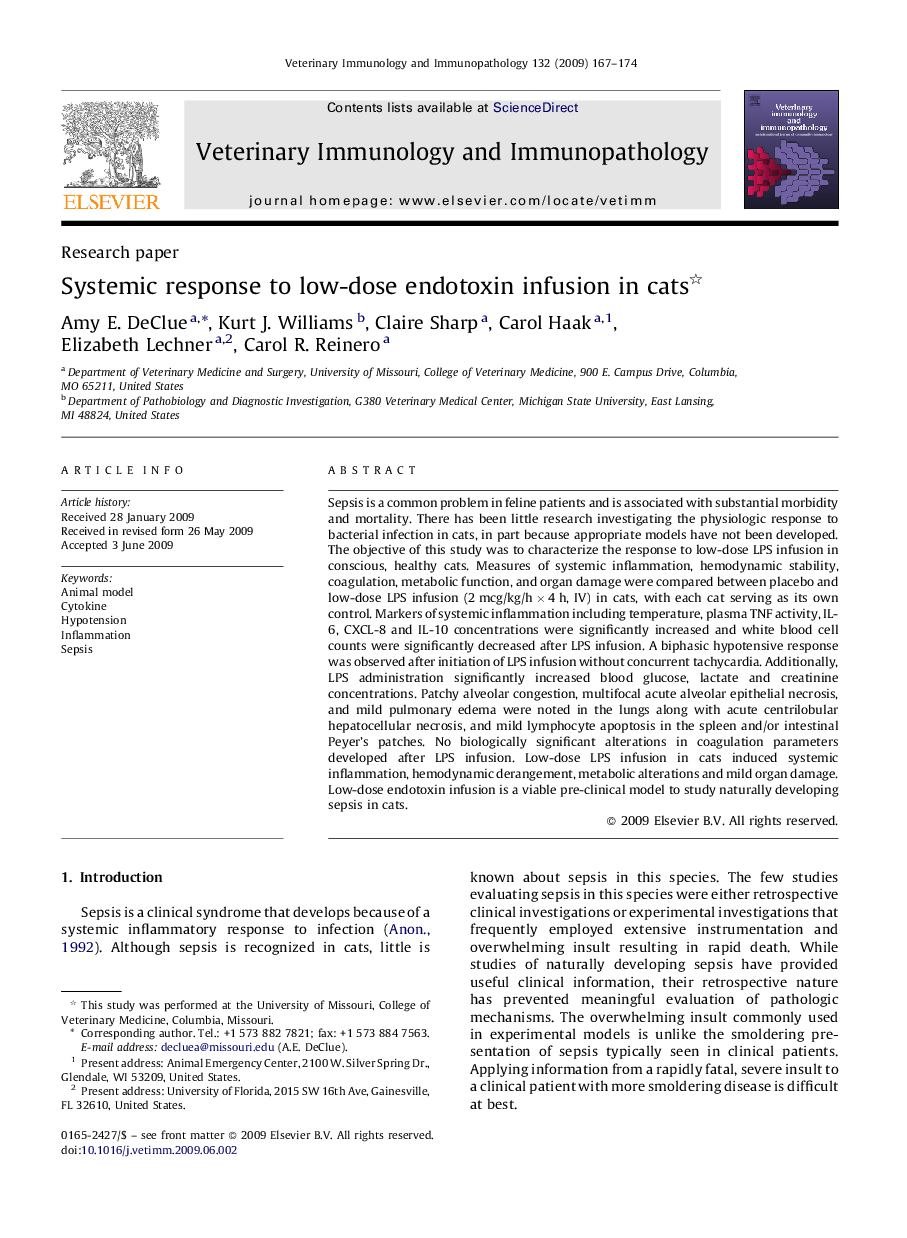| Article ID | Journal | Published Year | Pages | File Type |
|---|---|---|---|---|
| 2462610 | Veterinary Immunology and Immunopathology | 2009 | 8 Pages |
Sepsis is a common problem in feline patients and is associated with substantial morbidity and mortality. There has been little research investigating the physiologic response to bacterial infection in cats, in part because appropriate models have not been developed. The objective of this study was to characterize the response to low-dose LPS infusion in conscious, healthy cats. Measures of systemic inflammation, hemodynamic stability, coagulation, metabolic function, and organ damage were compared between placebo and low-dose LPS infusion (2 mcg/kg/h × 4 h, IV) in cats, with each cat serving as its own control. Markers of systemic inflammation including temperature, plasma TNF activity, IL-6, CXCL-8 and IL-10 concentrations were significantly increased and white blood cell counts were significantly decreased after LPS infusion. A biphasic hypotensive response was observed after initiation of LPS infusion without concurrent tachycardia. Additionally, LPS administration significantly increased blood glucose, lactate and creatinine concentrations. Patchy alveolar congestion, multifocal acute alveolar epithelial necrosis, and mild pulmonary edema were noted in the lungs along with acute centrilobular hepatocellular necrosis, and mild lymphocyte apoptosis in the spleen and/or intestinal Peyer's patches. No biologically significant alterations in coagulation parameters developed after LPS infusion. Low-dose LPS infusion in cats induced systemic inflammation, hemodynamic derangement, metabolic alterations and mild organ damage. Low-dose endotoxin infusion is a viable pre-clinical model to study naturally developing sepsis in cats.
